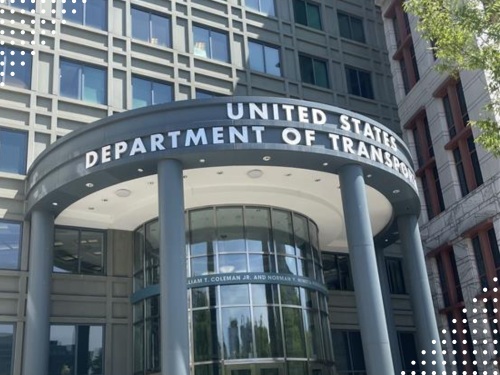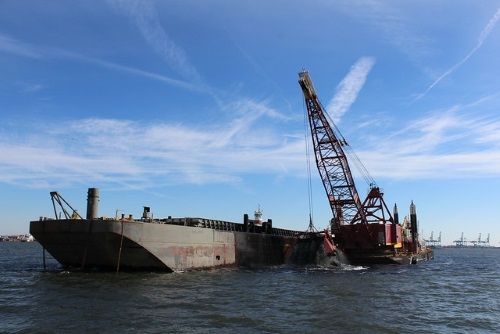A hearing held by the House Transportation & Infrastructure Subcommittee on Water Resources and Environment on April 10 explored ways to stem what Rep. Peter DeFazio, D-Ore., chair of the House T&I Committee, described as the “misuse” of harbor maintenance taxes.
[Above photo by the Army Corps of Engineers.]
“Because the Harbor Maintenance Trust Fund collects more revenues from shippers than Congress appropriates to maintain our harbors, approximately $9.5 billion in already collected tax revenues sits idle in the Harbor Maintenance Trust Fund,” Rep. DeFazio stressed in his written remarks.

“If the rate of tax collections and expenditures continue on their current trend, CBO [the Congressional Budget Office] estimates that the balance of the Harbor Maintenance Trust Fund will reach more than $14 billion within a decade,” he added.
Rep. DeFazio noted that “discretionary appropriations targets are not enough to get us to full-utilization of the trust fund. That is why, on a bipartisan basis, this committee has twice adopted language to provide the [U.S. Department of Transportation] Secretary with full access to the revenues in the trust fund for maintenance dredging purposes – in essence, ensuring that all the existing revenues in the trust fund are utilized for their intended purposes; the maintenance of our commercial harbors.”

Unfortunately, he said “this language has not been enacted into law. [That’s why] it is time we use our legislative authority to correct how Congress funds the operation and maintenance of our commercial harbors – and ensure these funds are used for their intended purposes.”
Rep. Grace Napolitano, D-Calif., chair of the Water Resources subcommittee, added in her comments that “there has already been a lot of interest in this Congress by the House and the Senate in resolving full utilization of the Harbor Maintenance Trust Fund. Full utilization should be supported across the board as it benefits everyone. This Congress must also address inequities in the Harbor Maintenance Trust Fund [because] it is not fair for harbors like mine [in California] to be paying so much in the tax and receiving so little.”
Rick Goche, commissioner of the Port of Bandon, Oregon, noted in his written remarks that “operation and maintenance of our nation’s navigation infrastructure is a federal responsibility. Yet small ports around the country have to fight like heck for funding that will allow the Army Corps of Engineers to do its job.”

And he said that while posts like his have “seen a substantial increase in the amount of harbor maintenance tax revenue that is dedicated to dredging and jetty maintenance,” a lot of that tax money “is still being used to fund other government programs or to balance the federal budget.”
Eugene Seroka, executive director of the Port of Los Angeles, added in his testimony that “a reliable, sustainable source of funding to support the competitiveness of our ports and harbors is essential” and that the Harbor Maintenance Tax “has been underutilized” over its history, “leading to a backlog of operations and maintenance projects and the accumulation of a large balance in the Harbor Maintenance Trust Fund.”
While no state departments of transportation testified at this particular hearing, many of them have responsibilities to support inland and coastal ports and have in the past supported more spending from the Harbor Maintenance Trust Fund on water navigation projects and similar endeavors.
In May 2017, the American Association of State Highway and Transportation Officials co-signed a letter with other groups seeking more waterway project funding. “Federal investments in navigation-related infrastructure are an essential and effective utilization of limited resources,” that letter said. “These investments pay dividends through increased trade and international competitiveness, sustainable job creation and federal, state and local tax revenues.”
 Top Stories
Top Stories
USDOT Makes $1.5B Worth of BUILD Grants Available
December 19, 2025 Top Stories
Top Stories

